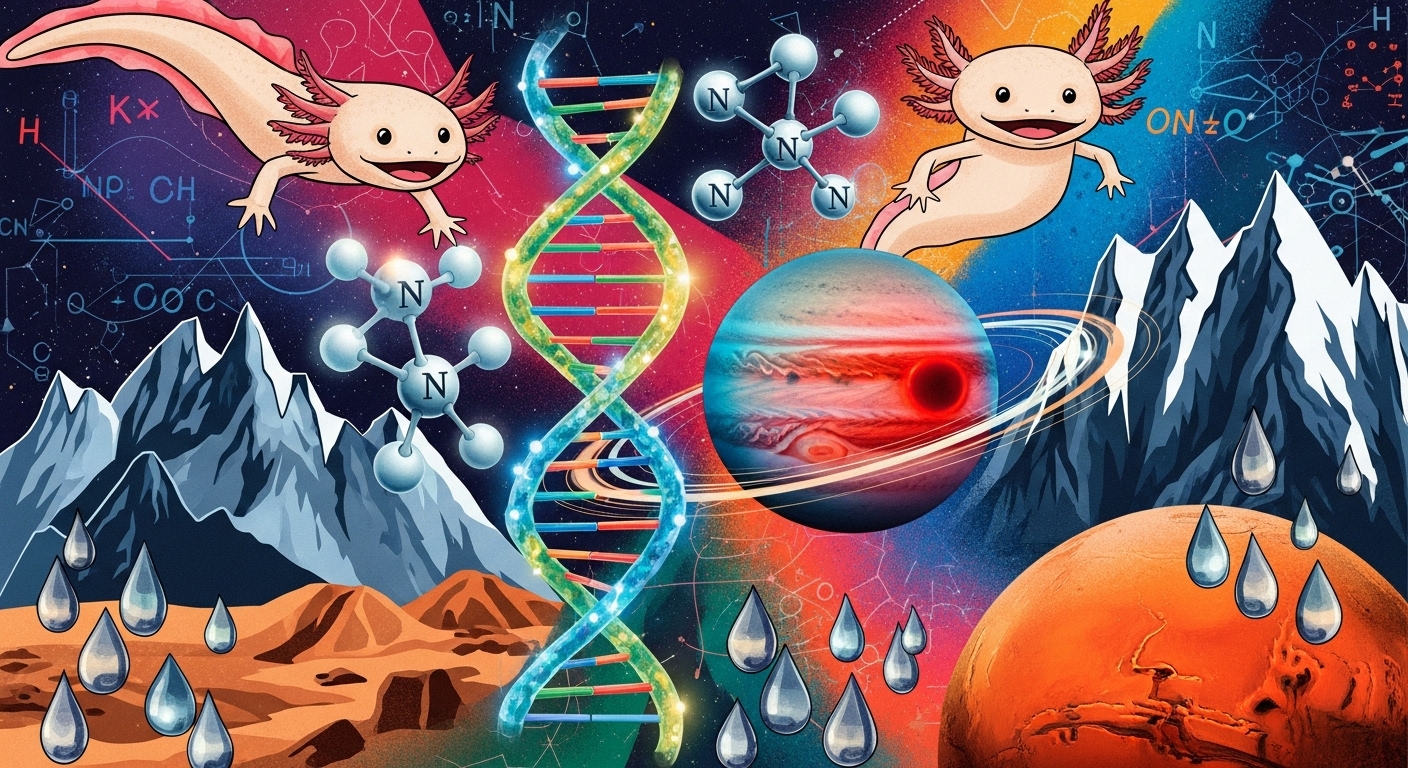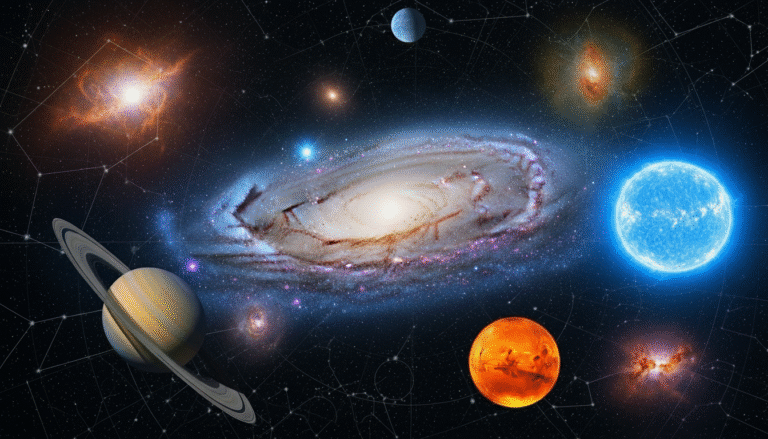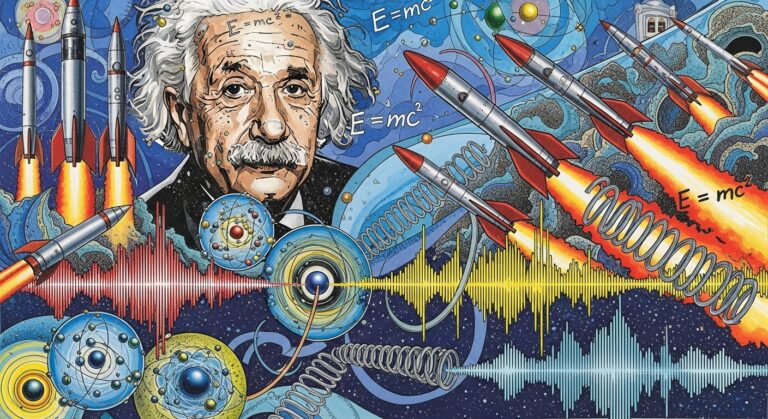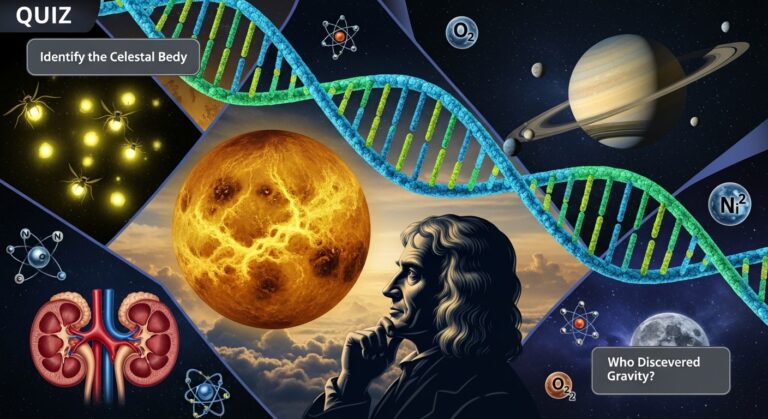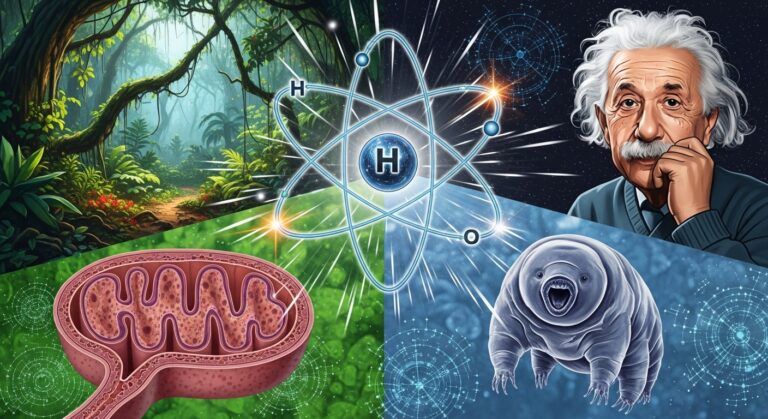Fun Science Quiz Filled With Surprising Facts
Science is one of the most exciting ways to explore the world because it explains everything we experience: how planets spin, how living bodies work, and how natural forces shape our environment. This fun science quiz is designed to help you learn surprising facts across biology, astronomy, chemistry, and earth science, all while enjoying the process.
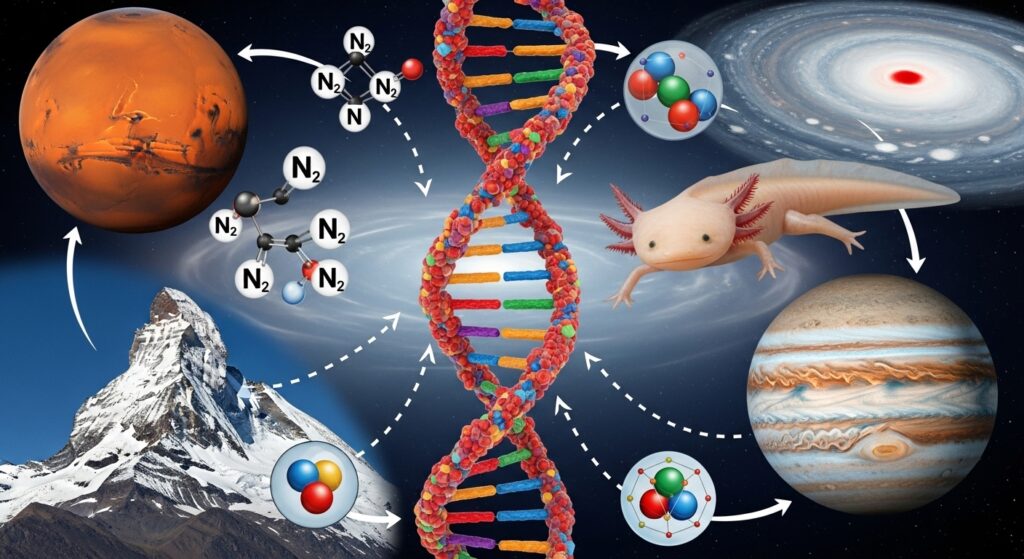
To ensure accuracy and value, several credible scientific references are included in this article.
This quiz goes beyond simply knowing the correct answer — every explanation below teaches you the real scientific story behind the fact.
Jupiter: The Fastest-Spinning Planet in the Solar System
Jupiter completes one full rotation in just about 10 hours. Even though it is massive — more than 11 times wider than Earth — its day is extremely short due to its rapid spin.
Jupiter’s fast rotation does the following:
- Creates strong bands of clouds
- Generates enormous storms like the Great Red Spot
- Causes noticeable flattening at its poles
- Accelerates internal heat movement
This extreme spin is possible because Jupiter is a gas giant made of hydrogen and helium. There is no solid surface to slow it down, allowing atmospheric layers to move freely and rapidly.
NASA confirms these rotation patterns through spacecraft like Juno, which directly measures Jupiter’s magnetic and atmospheric dynamics.
Source: https://www.nasa.gov/jupiter
Watson and Crick: The Discovery That Changed Biology Forever
James Watson and Francis Crick discovered the double-helix structure of DNA in 1953. This breakthrough revealed how genetic information is coded, stored, and transmitted across generations.
DNA’s key features include:
- Two twisting strands forming a double helix
- A backbone of sugar and phosphate
- Pairing bases: A with T, C with G
- A complete instruction manual for building proteins
This structure revolutionized everything we know about heredity, evolution, medicine, and forensic science. Their work remains one of the most monumental achievements in biology.
Source: https://www.britannica.com/science/DNA-genetics
Carbon Dioxide: Why Soda Bubbles Burst With Fizz
Carbon dioxide is the gas responsible for making soda fizzy. It is dissolved into liquid under high pressure. When you open the bottle, the pressure drops and CO₂ escapes as bubbles.
CO₂ works best because:
- It dissolves well in cold liquid
- It creates the perfect bubble size
- It adds a lightly acidic taste
- It slows bacterial growth
This fizzy reaction teaches us a lot about gas solubility, pressure, and the interaction between liquids and gases in chemistry.
Axolotls: Nature’s Limb-Regrowing Masters
Axolotls can regenerate entire limbs — bones, skin, nerves, blood vessels, and even parts of their heart and spinal cord. They do this with specialized stem cells that humans do not naturally possess.
Scientists study axolotls extensively because their regenerative abilities might one day help humans repair damaged organs or tissues.
Source:
https://www.nationalgeographic.com/animals/article/axolotl-facts
Nitrogen: The Gas That Makes Up Most of Earth’s Air
Nearly 78% of Earth’s atmosphere is nitrogen. Though it’s non-reactive in its natural form, it plays a crucial part in life.
Nitrogen is essential for:
- Making amino acids
- Forming DNA and RNA
- Building proteins in plants and animals
- Stabilizing atmospheric conditions
Nitrogen becomes biologically useful through nitrogen-fixing bacteria in soil, which convert it into compounds plants can absorb.
Protons: The Positive Charges That Define Elements
A proton is a positively charged subatomic particle found in the nucleus of atoms. The number of protons defines what element it is. For example:
- 1 proton → Hydrogen
- 8 protons → Oxygen
- 26 protons → Iron
Protons determine an element’s chemical behavior and structure. They also attract electrons, forming the foundation of all chemistry.
Mars: Why the Red Planet Looks Red
Mars is known as the Red Planet because its surface is covered with iron oxide — essentially, rust.
Mars once had rivers, lakes, and possibly oceans. Over time, these water sources disappeared, but the iron-rich soil oxidized, turning the surface a rusty red color.
NASA rover missions such as Perseverance and Curiosity have confirmed this through mineral analysis.
Source: https://www.nasa.gov/mars
The Andes: The World’s Longest Continental Mountain Range
Stretching over 7,000 kilometers, the Andes run along the western side of South America. They are the result of tectonic activity, where the Nazca Plate is pushed beneath the South American Plate, lifting the crust upward.
The Andes influence:
- South American climate
- River systems like the Amazon
- Ancient cultures, including the Inca
- Unique habitats and species
They are a geological marvel that demonstrates Earth’s dynamic crustal activity.
The Small Intestine: The Body’s Nutrient Gateway
The small intestine absorbs around 90% of the nutrients your body needs. It includes structures called villi and microvilli, which create a massive surface area.
It absorbs:
- Vitamins
- Minerals
- Sugars
- Amino acids
- Fatty acids
The organ works closely with the pancreas and liver to ensure complete digestion.
Mercury: The Shining Liquid Metal
Mercury remains liquid at room temperature because of its unique atomic structure and weak metallic bonding. This gives it a low melting point of -38.83°C.
Mercury was historically used in:
- Thermometers
- Barometers
- Electrical switches
Modern science avoids mercury due to its toxicity, replacing it with safer alternatives.
This Fun Science Quiz Helps You Learn Through Curiosity
This fun science quiz gives you engaging and memorable facts across astronomy, chemistry, physics, biology, and the Earth sciences. By exploring each explanation, you strengthen your scientific understanding and stay curious about the natural world.

